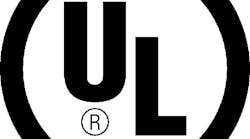What’s the Difference Between UL Then and Now?
UL (Underwriters Laboratories) has been a leader in safety science for more than 120 years, from its research and test reports on fire safety, circuits, fuses and heaters in the late 1800s to its entrance into the wearable technology and data security sectors today.
UL “Then”
UL originated from electrical engineer William Henry Merrill’s work at the 1893 World’s Fair in Chicago. After being hired to examine the electrical safety of the Columbian Exposition’s Palace of Electricity for the fair, Merrill continued safety testing innovative products by founding the Underwriters’ Electrical Bureau of the National Board of Fire. UL conducted its first test on March 24, 1894, on non-combustible insulation material. Since the beginning, fire safety has been the bedrock of UL, supported by decades of research on building materials, burn rates, and preventative measures.
This file type includes high resolution graphics and schematics when applicable.
From these beginnings, UL saw the need to expand its business to the safety testing of other products, including fire extinguishers, motor-driven cash registers, vacuum cleaners, sprinkler systems, and household appliances. UL began to work directly with manufacturers to streamline the approval process.
Now, after more than 40 years of testing recognized components, UL works with many manufacturers from the blueprint design phase, helping to incorporate UL-certified materials to expedite certification.
UL “Now”
As time and technology has evolved, so has UL’s capabilities. Today, the company has a presence in 44 countries with 159 laboratory testing and certification facilities. Numerous acquisitions in recent years gave UL new expertise and offerings to reflect the ever-transforming world of safety. With a growing range of services, UL expanded from beyond its original fire-safety business into fields as diverse as wearable technologies and transaction security.
Wearable Technology
UL recently assumed a significant role in the safety testing of wearable technology. Wearables are part of a growing technology trend that supports the notion of a “quantified self” by tracking and sometimes analyzing location data and even behaviors (e.g., purchasing patterns) in ways that can assist in daily tasks. The current worldwide market for wearable-technology products is valued at over $8 billion (USD), a number that’s expected to dramatically increase over the next several years. Some estimates have it exceeding more than $100 billion (USD) in annual sales by 2018.
As a rapidly evolving industry, wearable technologies pose certain health, safety, and performance risks. UL works with product designers and manufacturers to conduct proper testing and verification of wearables. Its team of engineers works with manufacturers in the fields of product safety, wireless interoperability, energy efficiency, biocompatibility, and medical regulatory requirements. Right now, wearable technologies face light regulation, so UL also works with companies in this industry to establish an internal process for validating and qualifying new materials, as well as following manufacturing standards to help ensure product integrity.
Transaction Security
UL’s expertise has broadened significantly within the last decade, extending beyond strictly physical products to virtual environments, such as electronic payments. The company joined the payments industry at an opportune time to fully integrate its portfolio of services as Europay, MasterCard, and Visa (EMV) certification becomes a goal for U.S. merchants. Two years ago, UL formed its Transaction Security division after acquiring several European companies experienced in EMV chip migration and smart-card development.
EMV devices must be certified that they’re tamper-proof and not corrupt, and since UL already certifies computer chips, the move to EMV chip certification was a natural transition. Now, as retailers make the switch this year to EMV-enabled point-of-sale terminals, UL supports merchants making this transition by helping with protection from unnecessary fraud liability.
Looking Forward
Businesses with long-term success prioritize innovation—it’s how they stay a step ahead of their competitors to meet the needs and desires of their customers. New innovations, however, can yield new risks. Since its start, UL has created standards and conducted research and testing to mitigate those risks and help ensure the safety and security of people and businesses. Through the development of testing methodologies and equipment, procedures, software, and standards, UL continues its commitment to advancing safety in lockstep with innovation.
This file type includes high resolution graphics and schematics when applicable.


